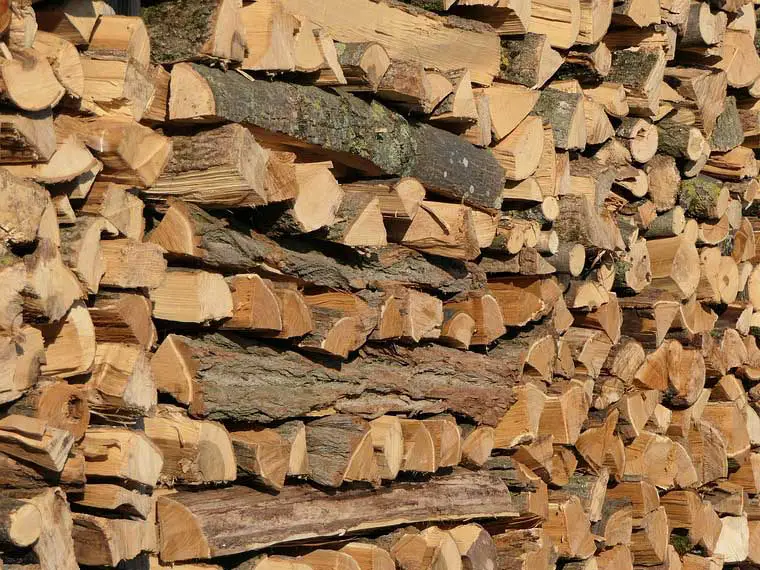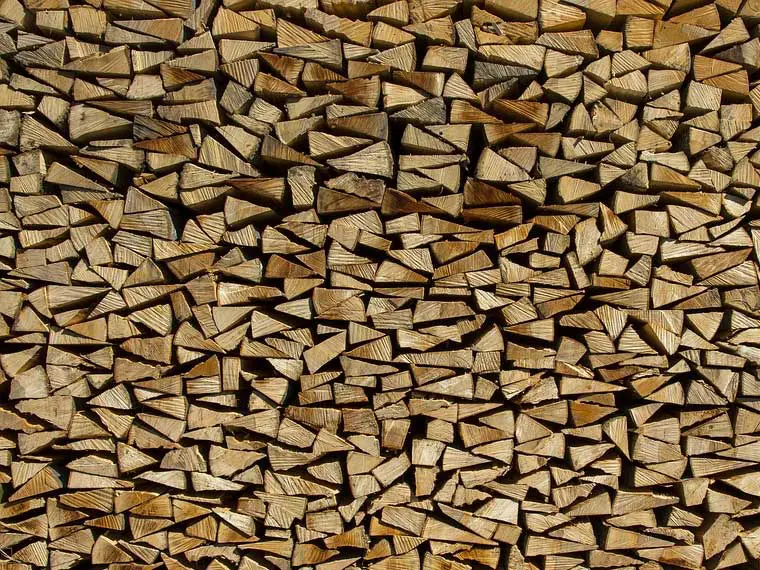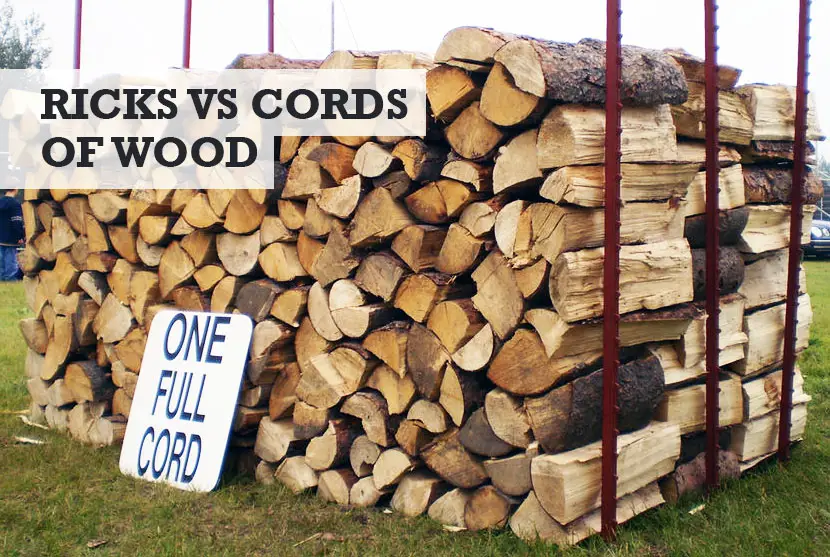As you prepare for the winter thoughts will soon turn to fuel, and that could mean needing to buy some firewood. However, if you are new to firewood heating you might be confused by the various terminology in use. For example, do you buy a rick or a cord firewood, and what’s the difference between them both?
The differences between a rick and cord and wood
The terms rick and cord of wood are often used interchangeably, but the reality is that they mean different things. In this guide I will explain the differences when considering the rick vs cord of wood question.
What is a rick of wood?
We will first start with ricks of wood. Rick is often used to refer to a specified amount of wood, usually between 1/3 and 2/3rds of a full cord. A cord is defined as being 128 cubic feet, which equals 4ft x 4ft x 8ft = 32 cubic feet per foot, and 4ft x 8ft = 128 cubic feet.
This means that a rick of wood equals between 32 and 96 cubic feet without the air spaces within the pile.
Handy Hint: I have gone into more details on what a rick of wood is and how big you can expect it to be in this guide.
What is a cord of wood?
The difference between a rick and cord is that a cord of wood is the standard unit of measurement and is equal to 128 cubic feet. Because airspaces within a pile of firewood can be up to 50%, there is often only 64 cubic feet of actual solid wood contained in one full cord of wood.
This means for you as a customer that if someone gives you options such as pick up half a cord or a full cord, they are comparing ricks.
Differences between ricks vs cords
1. Price
A rick of firewood will generally be a little more expensive than a cord. The price difference is not great, but it does exist.
It can sometimes be difficult to accurately measure the full size of a rick upon pickup, which further adds to the price discrepancy between these two terms for people looking at options on how much they will pay.

2. Accuracy
Another ricks vs cords difference is that frequently you are charged by the volume of wood rather than weight, which means that when buying either amount, you might not get exactly what you paid for if there are airspaces present in your pile of wood.
A cord will always be an accurate amount regardless of or not there are air pockets present.
3. Availability
Another difference between ricks vs cords is that you are not guaranteed to find the amount of wood you want to purchase by either term, but rather you will be limited by what wood is available in that size.
If someone has a full cord or multiple cords, they are less likely to sell it as half a cord. And because both terms are used interchangeably, if people are selling ricks, it does not mean that they also have cords available too, which could pose problems if someone was buying specifically for their needs based on one or the other.
4. Tallying up your wood
Finally, another key difference between ricks and cords is how easy it will be to increase the amount of wood you get totally. This might sound like a silly difference, but it is quite important if either firewood option will be used for something where accuracy is key.
A cord is easy to measure in a short amount of time due to its standard size, whereas a rick can sometimes be difficult to accurately measure because you cannot easily stack them or use a measuring tape across one pile.
Even when someone bundles their firewood into ricks, they often do not line up the pieces in straight lines within each stack, making it very difficult to know how many pieces are in a pile and how much space that equals between them.

5. Branding
The final difference between ricks vs cords is branding. Because both terms are used interchangeably, sometimes companies will do the same thing to their pricing for ricks vs cords to offer lower prices than other places that might offer 1/2 cords, for example.
Knowing the company and what they usually sell for could be a great deal and save you money if it is something you want or need.
FAQs
Which is better a rick or cord of wood?
There are pros and cons to each. On the one hand, buying by the price for either amount is great because it allows you the flexibility to get the best deal based on your budget.
However, if you are not given both options, it might be difficult to know how much wood you are buying, which can be a problem if you need to tally it up for something accurately. Finally, the availability of both terms is usually restricted by what wood they have available in that size.
Should you pay by weight or volume?
This is an important question because firewood purchased often has air pockets that take up space and reduce the actual amount of solid wood you are getting. Because cords are generally more consistent than ricks, most people will charge based on this standard to avoid differentiating between them so that there are no pricing discrepancies with their customers.
If you are buying firewood, ask whether they charge by weight or volume before you make your purchase to know exactly how much they will be giving you.
Conclusion
In conclusion, the key differences between ricks vs cords of firewood are the accuracy, availability, and ease of tallying.
When buying either option, it is important to know exactly what you will be receiving so that you can properly pay for your purchase. So, whether someone says “a cord” or if they specify a certain size, then you should ask about their different options before making your decision, depending on what works best for your needs.
You might also like…
- How you can arrange lava rocks on a fire pit
- Tips for cleaning out fire pits and the lava rocks
- Why you find frogs in your backyard despite having no water source
Image in header via https://commons.wikimedia.org/wiki/File:Cord_of_wood.jpg


